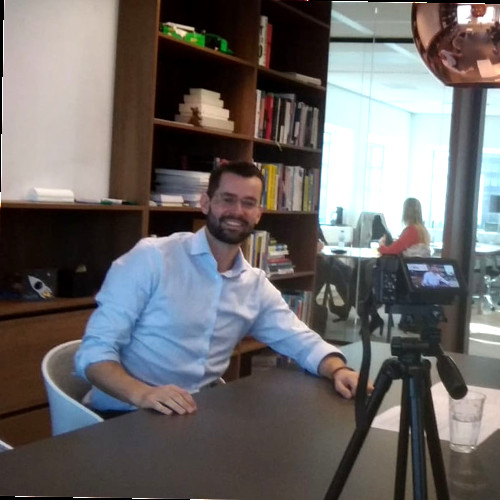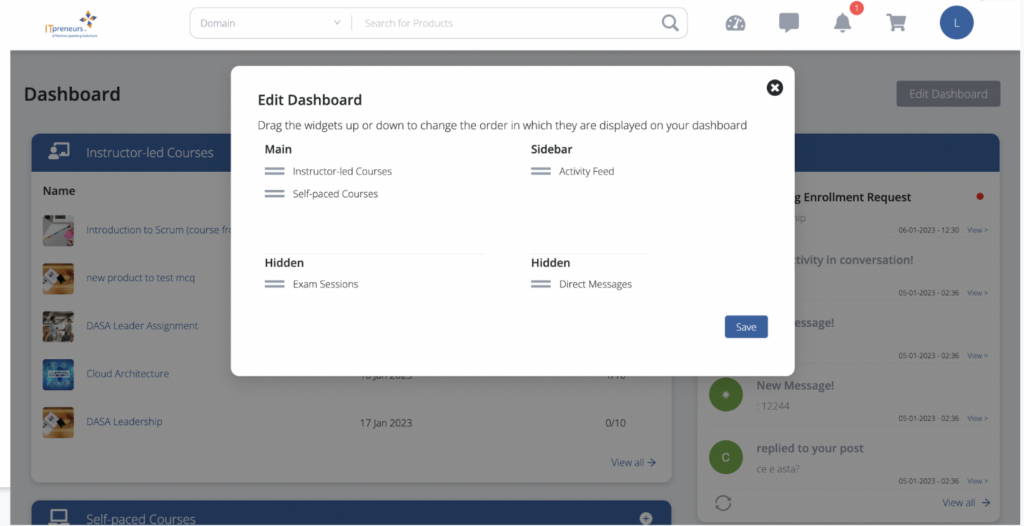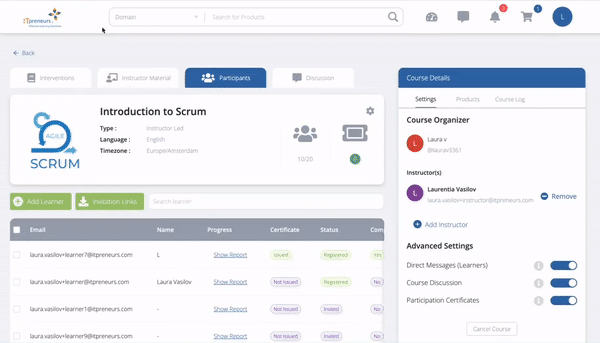Do you acknowledge that it is time to make a move? Are you searching for ways to get more autonomy so that you and your colleagues can collaborate towards success? Do your colleagues behave more like a player or a pawn? Here’s how Social Innovation contributes to Digital Transformation through serious play!
You are as much co-responsible for the success within your organization as you are empowered. Your management wants to tag along on the next improvement wave in the market. They will have to, as competition is growing stronger! You notice that strategies and work practices are changing increasingly fast these last years and you think to yourself: ‘We will have to keep improving and changing continuously.’ Yet, how will you convince the leaders in your organization that not only you but the rest of the organization too has to start moving ahead?
How do our leaders connect the fast world of high-tech with the much slower world of human behavior, high-touch?
High-Tech in Connection with High-Touch
Continuous change is not just the story of the newest hype called Agile; at the heart of this dance for efficiency and effectiveness, we find the question of how Social Innovation can support the organization through its digital transformation. How do our leaders connect the fast world of high-tech with the much slower world of human behavior, high-touch? Because every time you rearrange the organization to be ready for the future, ‘the future’ has surpassed you already, requiring yet another round of high-tech change. Just try to let your people get used to that.
The Bigger Picture
On a higher level of organization our leaders deal with a recurrent set of issues: do we remain customer centered on keeping sales up? Are our processes lean and agile enough to keep costs low? Do we have the right people to get the job done? And, importantly, how could our Innovation Architecture enable our business most optimally?
Fit for Business?
From this level of organization, we may expect a balanced vision, with more empowerment for the employee and accompanying resources. To arrive at such a vision and consequent successful transformation journey we could best start with a digital fitness scan: what is the current state of our innovative capacity? And what can we do to improve this capacity?
Done purposefully, empowered employees tend to be more motivated, engaged, and loyal to the organization.
The pressure on organizations to implement forms of social innovation increases. In our service economy, there is a decreasing demand for human labor as a means of standard production. What we really need is for employees to be engaged, offering creative solutions so that the organization as a whole can continuously improve its working processes and maximize customer value. On top of that, most innovations start outside of the organization rather than from within. Why would we try to create everything in-house when we can make use of the shared knowledge of our surroundings?
Every time you rearrange the organization to be ready for the future, ‘the future’ has surpassed you already, requiring yet another round of high-tech change.
So we need to design organizations which are human-centered to be able to leverage creative involvement, improve continuously and stay open to sounds and signals from the surrounding.
Cisco’s employee advocacy program is an excellent example of leveraging social innovation successfully. Done purposefully, empowered employees tend to be more motivated, engaged, and loyal to the organization.
The Motivation Dilemma
At first glance, it seems a clear story: involving motivated employees in business operation improves organizational impact. However, motivating and engaging people at work proves to be difficult. Agile advice team empowerment and a few other (short-cyclic) activities. D. Pink describes as prerequisites for motivation 3.0 a basic salary, and furthermore autonomy, mastery, and purpose. Yet, how can we make use of these techniques and ideas to implement them in our work environment?
The search for more autonomy and purpose at work, this shift from control and hierarchy to autonomy and equality is not new. In 1972 the Bolivar Project promised blue-collar workers more freedom and democracy at work. The success triggered more attention and copies of the model, which in turn created enemies in union leaders and managers of similar companies as it undermined their power. A few years later this project failed, only after the company changed owners who replaced managers. Instead of empowering and supporting the learning from mistakes, they taught employees that mistakes are punished.[1] Compare this to our current surge of freedom and democracy at work, promoted via Agile frameworks, and notice the importance of experimentation and mistakes on the road to success!
Motivated and Engaged Employees: Prerequisite for Social Innovation
To be able to make use of extra motivation and engagement of employees, a certain degree of freedom is inevitable. It makes a difference whether you lock a professional up with rules and demands, or give guidance through clear goals with a degree of freedom to reach them. Yet, many organizations struggle with the implications of letting go of rules and demands. Leaders dare little and choose a ‘fragile’ solution and only meagerly wish for, or on the flip-side demand creative input and engagement from employees. This (leadership) behavior demotivates and harms the organization in the longer run. A little more playfulness could bring much relief!
Boosting Social Innovation
There are functioning ways to boost Social innovation. Especially when motivation and engagement, the soft side of change is discussed. Only, this requires an ethic, a will of higher management to invest in the so-called soft side of change, in trust. Serious play, mixing work and game, has proven to be a motor for social innovation. Because every person and every organization already plays a game… conscious organizational design to trigger desired behavior is possible through gamification. You can grow insight into the game that your organization plays through serious games. Would you like to play more effectively with your organization?
Serious Play in the Workplace
Serious play and using the lens of a game to look at your work has proven to be very effective. Both for organizations in pursuit of more human-centered design, as well as for employees who want to increase their effectivity on the playfield of their organization. And, last but not least, serious play offers an experimental space to safely adopt new ways of working.
Three Forms of Serious Play
Picturing your organization as a playing field with players and pawns creates the urgency to become an active player. It is a real challenge for most people to understand the game they play, yet awareness is necessary before you can contribute sensibly. Continuous improvement, via Lean, Agile or other ways implies changes in tactics of the game. You may experience these changes as obstacles to your personal goals, or you can learn how to play the game from the bigger picture and align personal goals to reach success. This counts for individuals as well as organizations. Drawing near to each other and cooperate on the basis of trust and empowerment turns the game into a play for all. Because everybody is involved in the game: as a player or as a pawn. If you are not sure of your skills, come join us and learn how to play successfully!
Picturing your organization as a playing field with players and pawns creates the urgency to become an active player.
The three main ways game-thinking can impact you and your organization are serious gaming, gamification, and game-based learning. They guide your path from undesired control to the desired amount of freedom and motivation at work.
- Serious gaming translates parts of reality into a game. Elements, roles, and attributes help players recognize their own behavior while exploring new behavior. Playing a serious game offers trust in future successes, shortening the feedback loop, zooming in on different parts of reality that need clarification, and learning about new ways of working safely without consequences. You are invited to experiment and make mistakes!
- Gamification of work is a way of consciously designing the workplace to elicit the behavior necessary to created shared successes. It offers a toolbox to those who seek to enhance motivation and engagement at work, specifically when the interface between humans and ICT is involved. A gamified environment must have a degree of freedom in order to effectively engage employees, fun and creative input cannot be forced.
- Game-based learning enhances current learning formats by incorporating the newest insights into how our brain works. In fact, game elements and interactive learning have always worked well to convey knowledge and alter the behavior of individuals and groups.
Think Like a Game Designer
A playful attitude to work and life, in general, holds great advantages. Especially while searching to increase our degree of freedom, new forms of cooperation and more flexible organizations. Playfulness and experimentation are much less fitting to an environment with a high dosage of seriousness and risk-aversion. There are a right time and place for the game designer in us to awaken, yet all of us have this capability to think about problems in a game-like way. Games work wonders especially when you and your organization are wrestling with Agile implementation. Besides, games have proven themselves for years now!

So, if your aim is to effectively engage customers and employees, work processes should be designed human-centered, eliciting the desired behavior. No command and control, but a balance between guiding principles and self-directedness. Serious play supports this design of social innovation. It offers answers to the challenges of the Agile frameworks. How does my organization stimulate cooperation between teams and departments? How do we motivate and reward customer-oriented behavior? Who can get away with doing the bare minimum? Every organization already plays a game.
Be conscious and learn to think like a game designer so you can bring your A-game!
About the author

Experienced senior trainer and coach with a demonstrated history of working with international clients on digital transformation. Others say that I create movement and tempo and am not afraid to bring real change beyond buzzwords.



